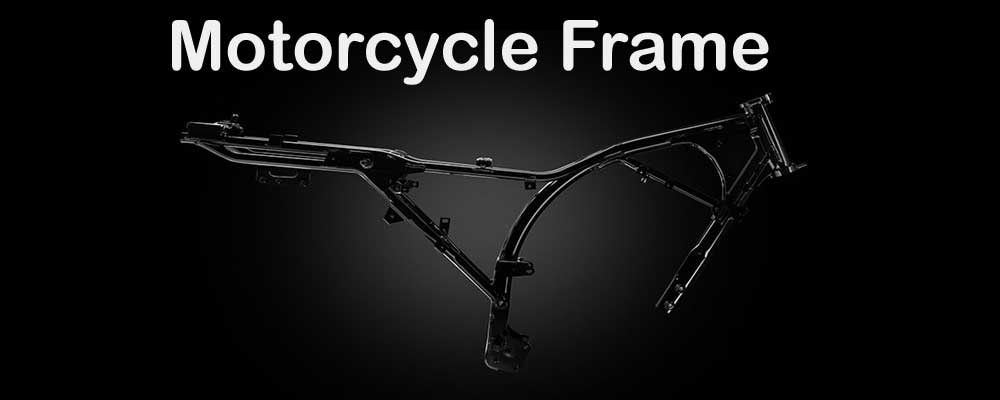What Is a Motorcycle Frame made of?
Firstly, let’s know what makes a motorcycle frame. The material is an essential quality of the structure. The frame’s rigidity, cost, and capability all these qualities depend upon its material. Conventionally, manufacturers use steel for budget-oriented motorcycles such as commuter bikes & mopeds. These frames make use of steel tubes. They bend or weld tubes together to suit a specific purpose/design.
Steel & Aluminum Alloy
Motorcycles with low to moderate performance parameters use steel. It is reasonably strong, cost-effective, and appropriate for its frames. However, modern motorcycles need their chassis to be stiffer & more lightweight. Besides, they should also look aesthetically better than traditional steel tubes. Hence, modern motorcycles make use of aluminum and alloys for the purpose. Aluminum and alloys deliver high performance to most mainstream motorcycles.
Exotic Materials in Motorcycle Frame
However, some high-performance sports bikes need even lighter and stiffer materials. As a result, manufacturers use exotic and expensive materials such as carbon fiber, magnesium, and titanium for these motorcycle frames. Some manufacturers also use composites made of these materials and newer materials. Unfortunately, these are even more costly. Such expensive materials improve the performance of powerful racing machines, like the ones in MotoGP. However, they have limited use in mainstream street bikes. For most general-purpose motorcycles, the performance of an aluminum or alloy chassis is more than satisfactory.
Following are the types of Motorcycle Frames by construction
Just like tires, different motorcycles need different types of frames. Manufacturers categorize motorcycle frames depending upon their construction and application. In addition, various performance parameters of a motorcycle need different frame designs.
1. Backbone Frame
This one is one of the most basic and economical types of motorcycle frames. As the name suggests, this one resembles a spine. However, it is not a complete skeleton. Instead, it keeps different motorcycle parts in place.
In this design, the amount of steel used is lesser than other motorcycle frames. Thus, it makes the construction of this type of frame very economical. In addition, the engine bolts onto the backbone frame in this design. Generally, the engine hangs off the backbone frame. Therefore, it is neither cradled nor contributes as a stressed member.
The backbone type of motorcycle frame is very economical to produce. However, it lacks excellent strength or torsional rigidity. Therefore, it is suitable mainly for low-cost budget motorcycles with a low-capacity engine. Honda CB92 Benly & Honda Hornet make use of the backbone type frame.
2. Single Cradle Frame
This frame design is a fundamental type, simple, and cost-effective. There is only one down-tube in this design. Therefore, this type looks more like the frame of a bicycle. It includes steel tubes of various sizes and strength capacities welded together. It forms an assembly that holds together various motorcycle components. Manufacturers often refer to these motorcycle frames as single cradle frames because they use single down-tube frames.
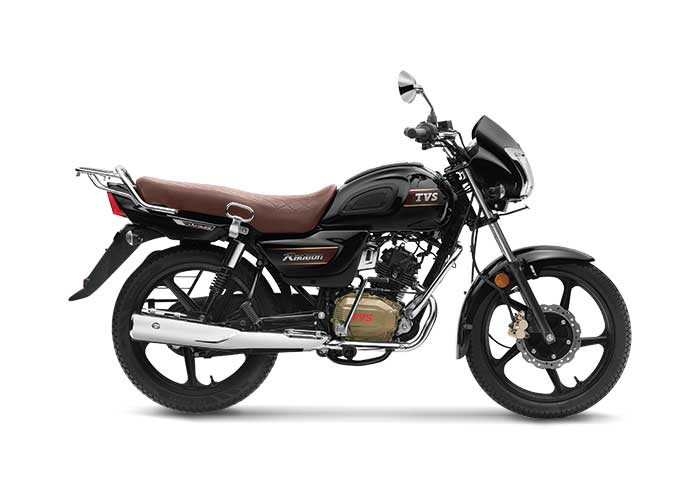
The factor that decides if it’s a cradle-type frame or not mainly depends on whether the engine on the motorcycle is a stressed member. In some cases, the engine acts as a chassis member and bears the stress. However, in other cases, it doesn’t. Mainly, manufacturers specify if the engine is a stressed member of the chassis or not in the case of a single down-tube type chassis frame.
Honda CG125, aka Honda Stunner and TVS Radeon, Victor, and Royal Enfield classic 500, use this type of frame.
3. Double Cradle Motorcycle Frame
Manufacturers also call it a double-down-tube chassis frame. A single cradle frame has just one steel tube going down to support the engine. However, a double-cradle frame has two tubes going down to support the engine. A double-cradle frame has a significant advantage over single cradle frames in strength and rigidity. However, they don’t cost very high compared to single cradle frames. In addition, the double-cradle frame can handle the forces well during a high lean angle. It provides heavy braking much better than a single-cradle frame.

Furthermore, Indian manufacturers use this variety of frames in large quantities. This frame type offers strength and rigidity. However, it is still not the best suited for performance-oriented bikes. Besides, it is a relatively older design. Suzuki TS50ER and Royal Enfield Continental GT650 use this type of frame.
4. Perimeter Frame
It is the most commonly used frame type among high-performance sports bikes. The perimeter frame is also known as the Twin-Spar frame. Besides, it is one of the most popular choices for performance sports bikes. Thus, manufacturers established this frame type on research from motorcycle racing. It suggests that a bike’s rigidity significantly improves if you connect its steering head to the swingarm in the shortest distance possible.
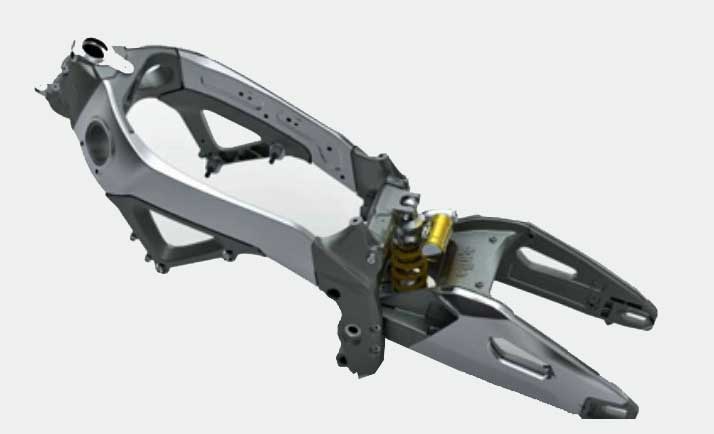
The beams join the steering head with the swingarm. Therefore, they need to be lighter without compromising stiffness. The two beams surround the engine as they stretch out for the swingarm pivot. Earlier, manufacturers made twin-spar frames of steel. However, almost all modern perimeter frames use lightweight aluminum.
This motorcycle frame type is popular with performance bikes. Its success is proof of its suitability for high-performance applications. Honda CB1000RR, Ducati Panigale V4, Bajaj Pulsar NS160 and Bajaj Dominar 400 use this type of frame.
5. Trellis Frame
The Trellis frame is quite similar to the perimeter frame. This frame’s primary role is to connect the steering head with the swingarm as directly as possible. However, the main difference is how the two beams construct/connect to the steering head.
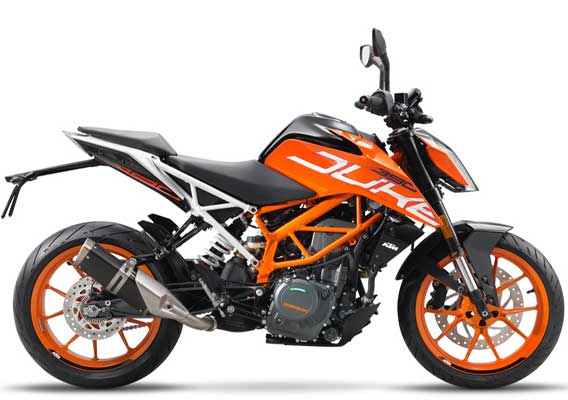
The perimeter frame uses aluminum beams. However, the trellis frame uses numerous short-sized steel or aluminum tubes welded together. They form a trellis-like structure. In most cases, the trellis frame is better than the perimeter frame in terms of rigidity and lightweight construction. Another great advantage of the trellis frame is that it’s relatively simpler to manufacture. Besides, it doesn’t require heavy machinery for its production.
Despite its simplicity, it’s very effective. Hence, it is the preferred motorcycle frame choice for many bike manufacturers. For example, KTM 390 Duke, 690 Endure, and most modern Ducati motorcycles use this frame type. Read more about Trellis Frame here.
6. Monocoque Motorcycle Frame
Furthermore, cars typically use monocoque type frames. Manufacturers build them in highly robotized and automated manufacturing units. Generally, these are more expensive to make unless you have a massive production scale.
However, some extreme-performance motorcycles require the entire skeletal structure made of a single, super-stiff piece of metal. Hence, manufacturers term it as a monocoque motorcycle frame. However, manufacturers don’t make such frames very commonly. Besides, they use it mainly for hyperbikes or motorcycles with extreme power. Such motorcycles demand unconditional torsional rigidity and lightweight construction.
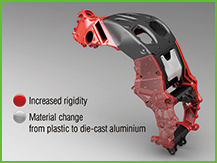
Furthermore, some hyperbikes make use of this type of motorcycle frame. They have complex construction and a high degree of precision. Such structures regularly use exotic materials such as carbon fiber and magnesium. Thus, they are costly as compared to other standard frame types. Kawasaki Ninja ZX-14 and Ducati 1199 use this type of motorcycle frame.
All Images – Courtesy: respective manufacturers
Watch a Bike having Monocoque Frame in action here:
Read More: What is Motorcycle Traction control system & how it works?>>
